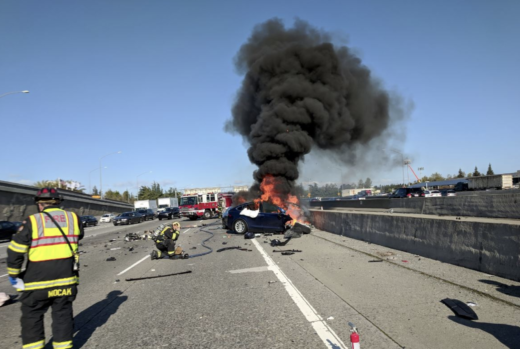Updated 3 p.m. Thursday
Federal safety officials say that a Tesla SUV involved in a fatal crash March 23 on U.S. 101 in Mountain View was being operated in the vehicle's semi-autonomous mode and accelerated sharply just before it slammed into a highway barrier.
The National Transportation Safety Board's preliminary report on the crash gives a second-by-second account of the Model X's behavior as it approached the exit from southbound U.S. 101 to Highway 85.
The agency says data retrieved from the vehicle showed that the Tesla-branded Autopilot system was engaged for the 18 minutes and 55 seconds before the crash that killed the driver, 38-year-old Apple software engineer Walter Huang.
The report says the system cautioned Huang several times -- twice with visual alerts, once with an audio alert -- that he needed to put his hands on the steering wheel. In the final minute before the crash, Huang's hands were detected on the steering wheel three times for a total of 34 seconds. His hands were not on the wheel, the report says, for the six seconds before impact.
